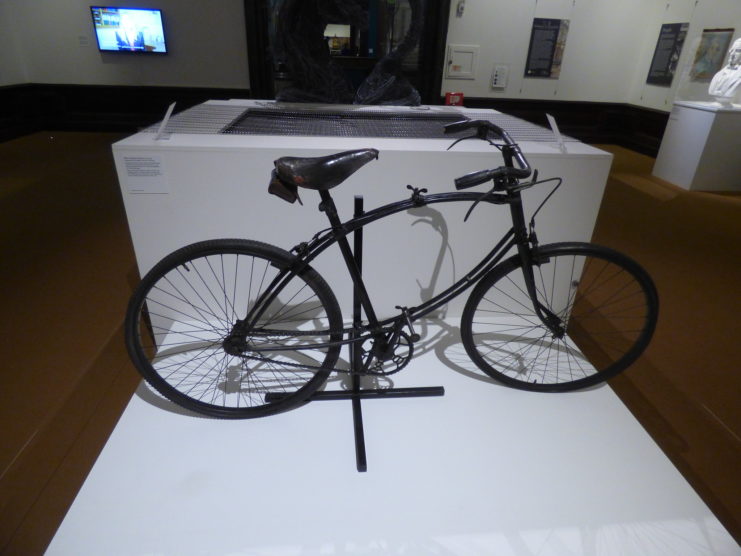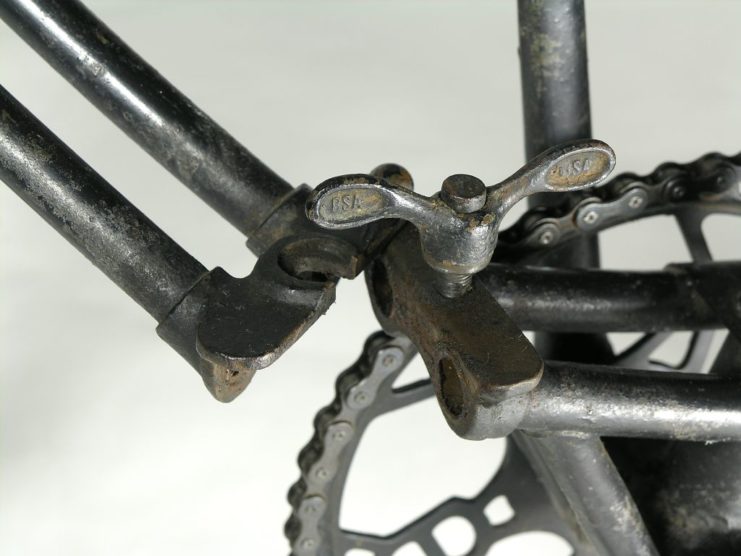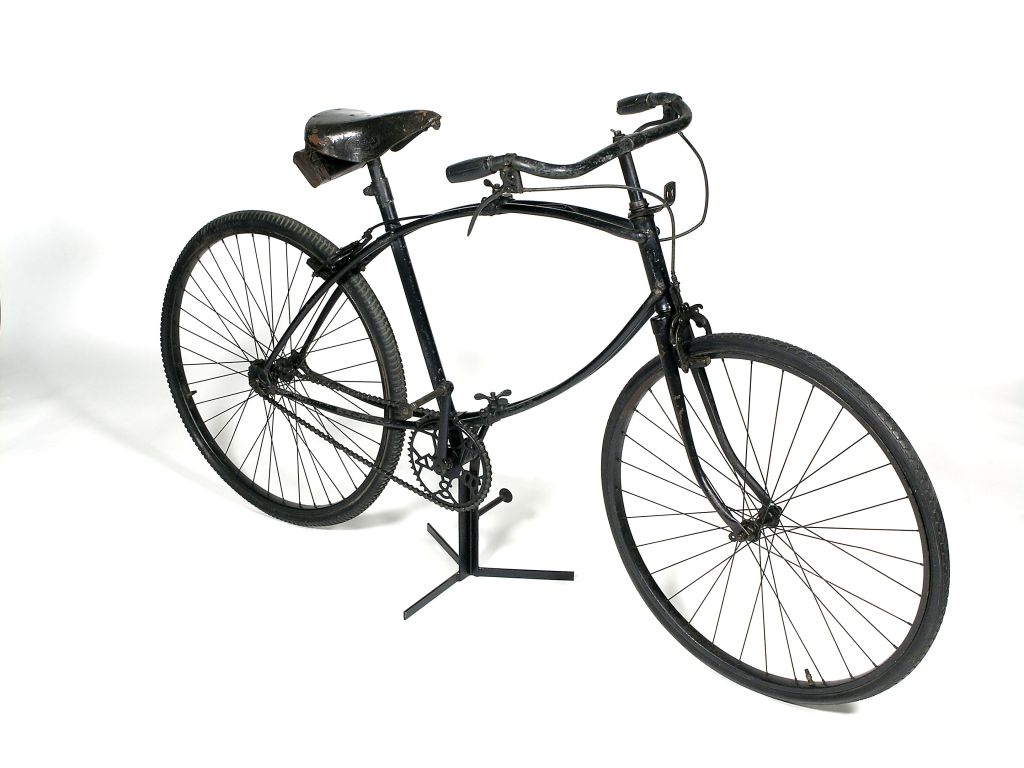As if jumping out of an aircraft laden with parachutes, equipment, and a weapon while under enemy fire wasn’t daring enough, some British paratroopers made the jump while clinging onto a bicycle. The practice may seem crazy, but once a paratrooper lands, his feet are his only means of transport. A bicycle offers the soldier a much faster and more efficient way of traveling, something that is useful during a surprise assault.
The bicycle is one of the simplest and most reliable forms of transport. It doesn’t need fuel and does not suffer from the same mechanical failures experienced by more complex machines. Because of this, the humble, peddle-powered bike can be an extremely helpful tool in the ever-changing conditions of war.
Many European nations, including Germany, Poland, and Italy, already had bicycle units in their armies by the time WWII began. The Swiss Army’s Bicycle Regiment continued using them until 2001.
British paratrooper bicycle

While bicycles were tremendously useful during WWII, the British anticipated using them much more than they actually did. The Birmingham Small Arms Company Limited (BSA) produced over 60,000 BSA Airborne Folding Paratroopers Bicycles between 1942 and 1945.
The bike could be folded completely in half by loosening two wingnuts, reducing its overall size. The frame of the bike featured brackets that would hold a soldier’s rifle while traveling. Like most military equipment at the time, the BSA bikes were painted a khaki green, although a small number of bikes produced near the end of WWII were painted brown due to shortages of the usual green. Today, bikes in this color are exceptionally rare.
Despite their name, they saw combat with various different units. On D-Day, bicycle troops were able to rapidly move inland from the beaches to secure key objects, including a unit that reached the strategically important Pegasus Bridge shortly after it was captured by the British.
They were also used in the Battle of Arnhem.
They were particularly useful for paratroopers because they are rarely dropped directly onto their objective, and must travel there after landing. The bicycle can cover large distances much faster than on foot, and does so much more quietly than a conventional vehicle, maintaining the element of surprise.
Jumping from an aircraft with a bicycle

British paratroopers carrying a BSA bicycle would jump from the aircraft while holding the bike out in front of them. It was also attached to their equipment to prevent it from falling if the soldier’s grip failed.
After landing, the paratrooper would simply unfold the bike and tighten the wingnuts and they were ready to go.
More From Us: A Bicycle Troop Peddled Through Minefields To Help Defeat The Germans
Once the bikes had served their purpose in securing early objectives, they usually became more of a hindrance than a benefit, so many would end up abandoned. However, they were still handy to others, like aircraft crews who needed a form of transport while on the ground. Tank crews were also known to strap them to their vehicles for similar reasons.
After the war, lots of the bikes ended up in civilian hands, particularly in countries where they were deployed in large numbers. Today, BSA bicycles can be still be found in museums or in the hands of collectors. Depending on the exact model, some are now extremely rare.
